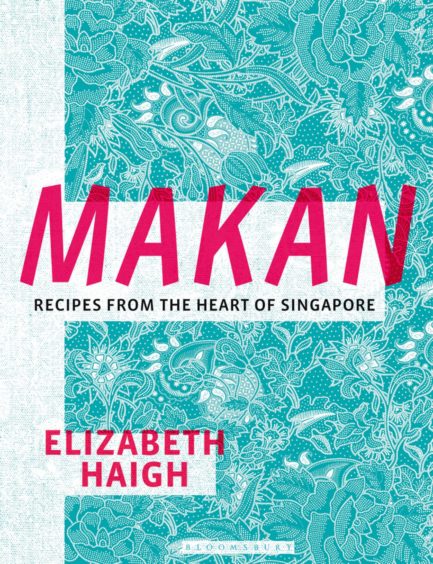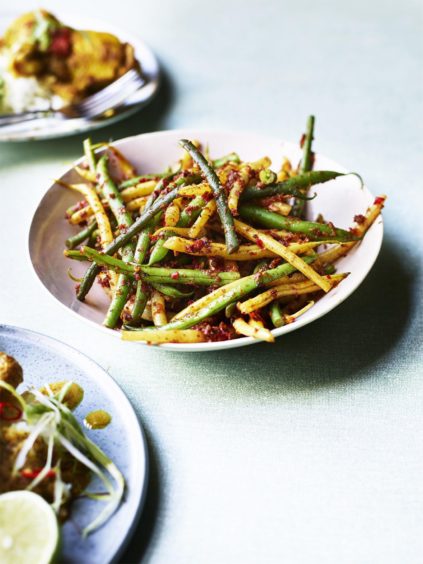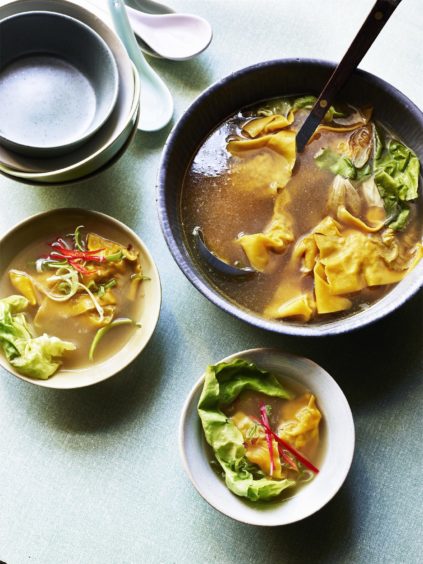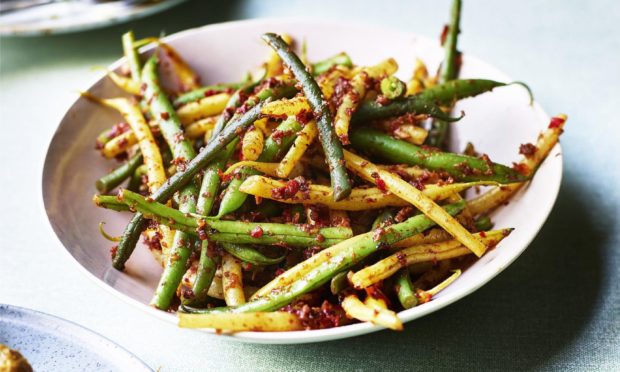Chef Elizabeth Haigh has released some recipes from her new cookbook all centred around Singaporean cuisine that comes from the heart, at home.
You may recognise the name Elizabeth Haigh, 33, who is the Singaporean-born chef who competed on MasterChef in 2011 and then went on to earn a Michelin star for London restaurant Pidgin.
Now, with the launch of her cookbook Makan: Recipes From The Heart of Singapore, Elizabeth is bringing her native cuisine to the rest of the world.
The name “makan” means “dinnertime” or “let’s eat” and Elizabeth calls the book “a love letter to my family” and “our Singaporean heritage”.

It’s packed with the Singaporean dishes she ate growing up (“I would be baffled at beans on toast”), using seasonal ingredients found in Britain (her dad’s British; Sunday roasts were a weekly staple).
She writes: “When people move and mix together, food just gets better” – and is adamant that’s true. “Food represents community. And without community, there’s no food, there’s no recipes.”
Makan: Recipes From The Heart Of Singapore by Elizabeth Haigh is published by Bloomsbury Absolute, priced £26. Photos by Kris Kirkham.
Spicy green beans with chilli and garlic
Serves 2

Ingredients
- 1tbsp dried shrimps
- 6 dried red chillies
- 3 garlic cloves, peeled
- 2 banana shallots, peeled
- 2 tbsp cooking oil
- 2 tsp belachan (fermented shrimp paste)
- 250g green beans, trimmed and cut into 1.5cm pieces
- 2 tbsp water
- 2 tbsp pork floss (rousong), optional
- Salt
Method
- Soak the dried shrimps and chillies in warm water for at least 10 minutes or up to one hour, then drain. If you don’t want the dish to be too spicy, remove the seeds from the chillies, then place them in a blender with the soaked shrimps, garlic and shallots.
- Blend together to make a rough paste.
- Heat the oil in a wok over a medium heat. Add the chilli-shrimp paste and stir-fry until aromatic, then add the belachan and stir for a couple more minutes to cook the paste out.
- Turn up the heat slightly, add the green beans and give it all a good stir. Stir-fry for a couple of minutes. Add the water to help “steam-cook” the beans and season with salt, then turn the heat down and continue cooking for four to five minutes or until the beans are tender (no more than seven minutes in total).
- Serve immediately with pork floss sprinkled on top, if using.
Wonton soup
Serves 4, or 6 as a side

Ingredients
- ½ pack wonton skins/wrappers (readily available in Chinese supermarkets)
- 2L salted water
- 2L chicken stock
- Soy sauce
- Choi sum or lettuce, shredded
- Spring onions, chopped
- Toasted sesame oil
- Salt and white pepper
For the filling:
- 200g minced pork (10% fat)
- ¾tsp salt
- ½tsp caster sugar
- ½tsp toasted sesame oil
- A good pinch of white pepper
- 1tbsp rice wine (shaoxing or sake)
- 2tsp corn or groundnut oil
- 1tbsp water
- ½tsp cornflour, plus extra for dusting
- 170g peeled raw prawns, chopped
Method
- Start by making the wonton filling. Put all the ingredients, except the prawns, in a bowl and mix together by hand for five minutes. You want to make sure that the pork and seasonings are thoroughly combined. Mix in the chopped prawns until evenly incorporated.
- To make each wonton, take a wonton skin and put about one teaspoon of filling in the middle. Wet the edges of the skin with water, then bring the two opposite corners together to form a triangle, trying to remove as much air from the wonton as possible (to prevent it from bursting open later on). Press the edges together to seal.
- Dust the bottom of the wonton with a tiny bit of cornflour to prevent them from sticking together.
- Continue making wontons like this – you should be able to make about three dozen, depending on how generous you are with the filling.
- Bring the salted water to the boil in a saucepan, then turn the heat down to medium. Add the wontons one at a time to the water. Don’t rush and don’t crowd the pan, cook in batches if you need to. Once a wonton is cooked, it will float to the surface, around four to five minutes.
- Scoop out the cooked wonton and place in cold water for 10 seconds. Lift out and set aside. Continue until all your wontons are cooked.
- To complete the soup, bring the chicken stock to the boil in a large pot, then turn the heat down to medium. Season with salt, pepper and soy sauce to taste. Add the choi sum or lettuce, then add the cooked wontons, dropping them gently into the soup.
- Take care not to stir hard as you don’t want to break the delicate wontons. Ladle into bowls.
- Alternatively, I find it easier to put the wontons into bowls and ladle the stock into the bowls.
- Garnish each with chopped spring onions and a drop of sesame oil.
